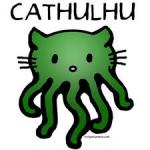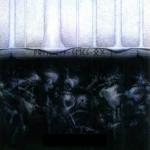Posted 08 October 2023 - 03:30 AM
I believe that it all comes back to thematics in the end. Erikson seems to like writing conceptually and metaphorically.
What I mean by this is that where in traditional storytelling you have 'Good' versus 'Evil', the central premise of the MBotF seems to tweak this to make it less black & white and more grey (or less Andii vs Lioson and more Edur, if you like). So instead of old school Good versus Evil, we have Justice and Judgement versus Empathy and Foregiveness/Redemption. Or, more accurately, you have certain radical factions who are so self-righteous and arrogant that they feel they have the 'god-given' right to judge others and act as arbiters and executioners to cleanse the infidels. The Forkrul Assail have been built up from very early on to embody that trait and to be that thematic metaphore. Note that our baddies in the final books are only a faction of Forkrul (the 'Lawful Inquisitors'; there are other Forkrul not involved in this fanatic purge that we encounter in Assail) and only a faction of the Liosan (Kadagar Fant's tribe, not Jayashul group - and supposedly L'oric as well - who we meet in Stonewielder).
In HoC, we encounter Calm (self-proclaimed 'Bringer of Peace', i.e. death) who is so immensely powerful that it took Icarium and a whole host of T'Lan Imass to imprison her. She is a seriously immmense threat. And she tells Bairoth:
" There will come a time when he [Karsa] stands poised to change the world. And when that time comes, I shall be there. For I bring peace. When that moment arrives, cease guarding him. Step back, as you have done now. " Big foreshadowing that we have not seen the last of her and her ilk.
In RG, we learn about the Just Wars through Beak. This was a conflict between the Forkrul and the Liosan, basically with both sides being convinced that the 'God of Justice' was on their side. According to Beak:
" They fought on the ruins. During what they called the Just Wars. Here, it was only a skirmish, but nobody survived. They killed each other, and the last warrior standing had a hole in her throat and she bled out right where the Fist is standing. She was Forkrul Assail, and her last thought was about how victory proved they were right and the enemy was wrong. Then she died. "
We also learn that the site has a Jaghut ruin and and the whole place is under an Omtose Phellack ritual. In TtH, Brood tells Endest Silaan that the Jaghut and the Forkrul were polar opposites, with the Jaghut abhorring the Forkrul arrogance and separation:
" 'Was there war?'
Caladan Brood was silent for so long that Endest began to believe that no answer was forthcoming, and then he glanced up with his bestial eyes glittering in the ebbing flames of the hearth.' "Was"?'
Endest Silann stared across at his old friend, and the breath slowly hissed from him. 'Gods below, Caladan. No war can last that long.'
'It can, when the face of the army is without relevance.' The revelation was... monstrous. Insane. 'Where?'
The warlord's smile was without humour. 'Far away from here, friend, which is well. Imagine what your Lord might elect to do, if it was otherwise.'
He would intervene. "
So again foreshadowing of Forkrul being in the picture and very nasty. And it might also add extra motivation to Hood's actions.
In addition, we learn that Forkrul are in Kurald Thyrllan by the time of DoD (encounter with Yedan Derryg), so they are clearly in league with or may have even usurped the Liosan for their goal, which is to cleanse the whole world of humankind, which is judged imperfect/impure/weak. The Liosan attempt to break through at Lightfall in the final books is to aid the Forkrul in this cleansing, which is about to start with the aid of the power of the Crippled God's heart.
Similarly, the K'Chain Nah'ruk are described as intent on imposing a brutal order on their environment, which places them in opposition to the much more chaotic K'Chain Che'malle. They are first mentioned in MoI. In MT, we learn that when the Andii and Edur arrived in the Malazan world, they encountered and destroyed an army of Che'malle and Nah'ruk in Lether, wiping out most Che'malle but leaving a faction of rebellious Nah'ruk near Morn. In tBH, Quick Ben encountered a fleet of Nah'ruk skykeeps inside the Imperial warren. The mage Sands observed that the skykeeps had crossed over from Chaos, which as we learnt from the conversation between Draconus and Paran inside Dragnipur was in eternal conflict with Darkness (i.e. link with Andii vs Liosan themes). Draconus also tell Ganoes that he originally had judged that Mother Dark was too lenient/empathic by allowing the forces of light and shadow to diminish her power and forcing her to retreat, so he created Dragnipur to bind the Gate of Darkness/Kurald Galain away and protect it from the forces of Chaos (light, shadow, entropy, creation, or similar physics concepts in opposition to darkness/vacuum/absence). He states that he now regrets this decision and that he had misunderstood the nature of the Gate. The Nah'ruk were using chained dragons/dragon blood (which is chaos magic) to power their skykeeps. Interestingly, Edur folklore from Lether tells us that the Chaos pursuing Darkness is actually a final vengeance from the Che'malle for the Tiste invasion that almost wiped them out, so in a final act they supposedly sent their sorcery (chaos) into the domain of Darkness like a plague and forced Mother Dark to retreat.
There is a longstanding conflict between the Forkrul and the Che'malle, in which the Forkrul turned on their own God to leech it for power and destroying most of the Che'malle nests. The final matron in the conflict opened a portal to Chaos, destroying herself and the Forkrul's God and creating the Glass Desert. We learn in DoD/tCG that it actually is the Forkrul Assail who are in league with (or have taken control of?) The Nah'ruk who have sent the Nah'ruk to destroy the remaining Che'malle, running into Tavore's army in the process.
I am sure there are lots more links, but the main point is that none of these plotlines exist in isolation and they are really just a personification of the thematic plot of self-righteous, arrogant/deluded Judgement versus Empathy / Redemption. That is the theme that the whole series has revolved around and what we are building towards at the climax. It isn't really about the Forkrul or the Liosan or the Bonehunters or the Shake, it is about uncontrolled Power (the Crippled God) being abused by self-righteous zealotism, that is countered not by vengeful vigilantism, but by empathy and remorse/redemption. It would have been 'easy' for our heroes to see the Crippled God as an Evil entity and extract full vengeance upon him, but instead they recognise that he is a tormented and confused (pulled down, chained, drained, abused) victim himself who deserves help. And we discover that it is not the Crippled God who was the big bad guy all along, but a faction of shady nasty-minded zealots with hidden motives and longstanding petty feuds who have been abusing events all along. That is really the core, at least in my opinion, of the books. And that is also why I firmly believe that it wouldn't work as a set of standalone adventure books in line with e.g. Discworld. It is all about thematics.
Yesterday, upon the stair, I saw a man who wasn't there. He wasn't there again today. Oh, how I wish he'd go away.
 Gorefest, on 02 October 2023 - 11:51 AM, said:
Gorefest, on 02 October 2023 - 11:51 AM, said: Abyss, on 04 October 2023 - 01:58 PM, said:
Abyss, on 04 October 2023 - 01:58 PM, said:
 Help
Help













